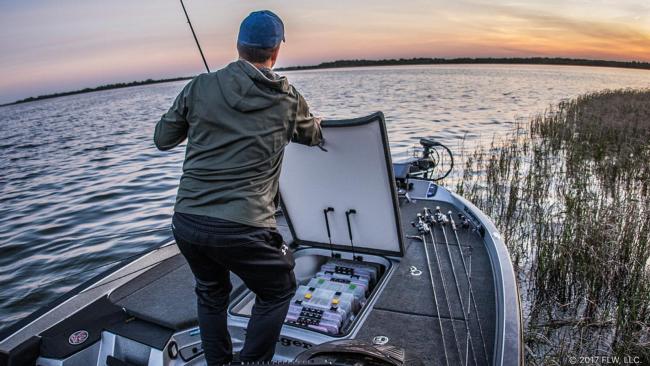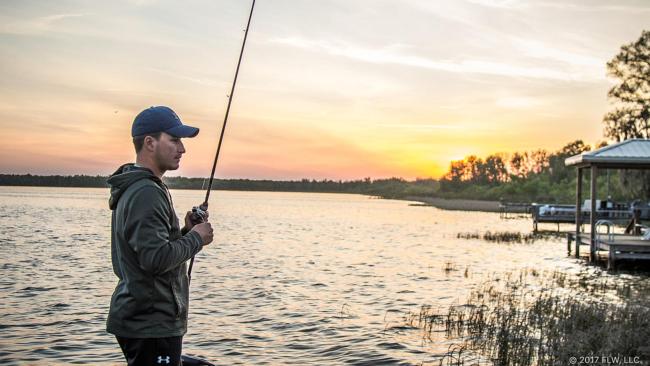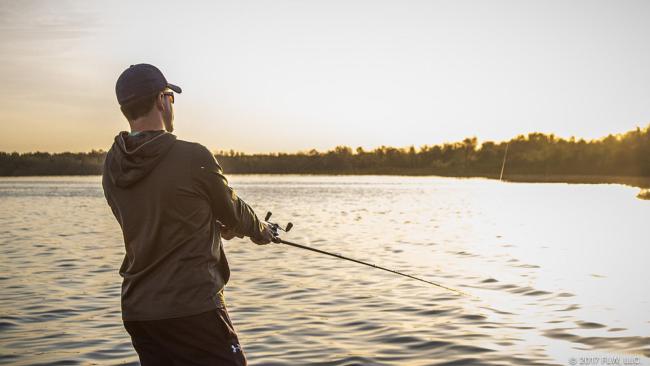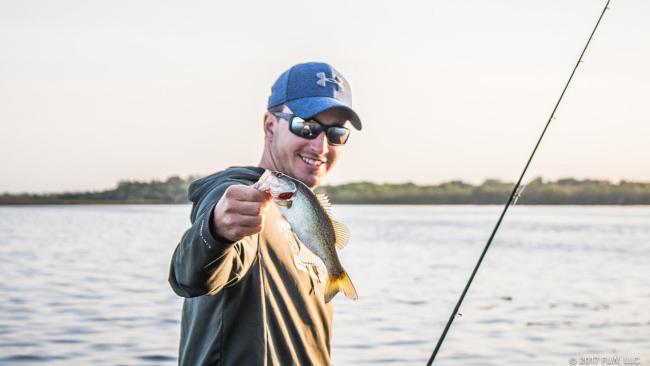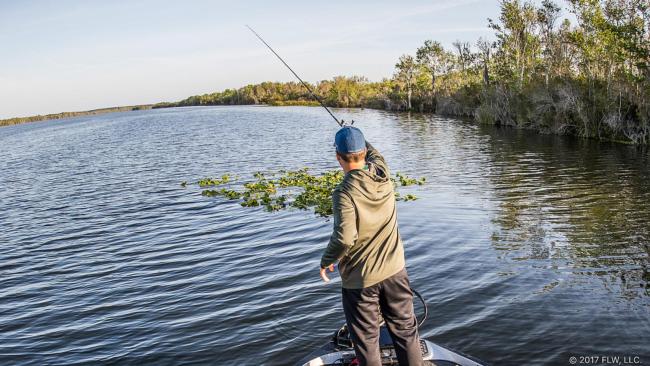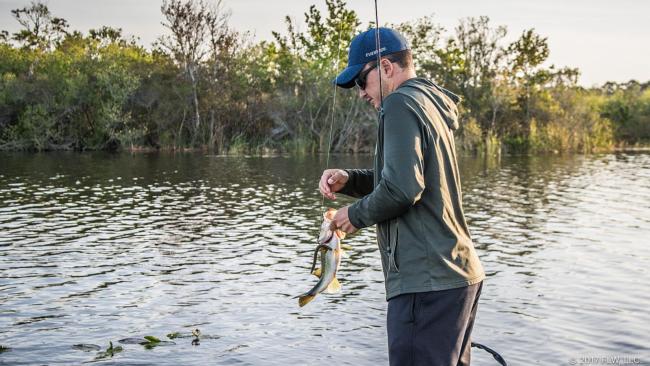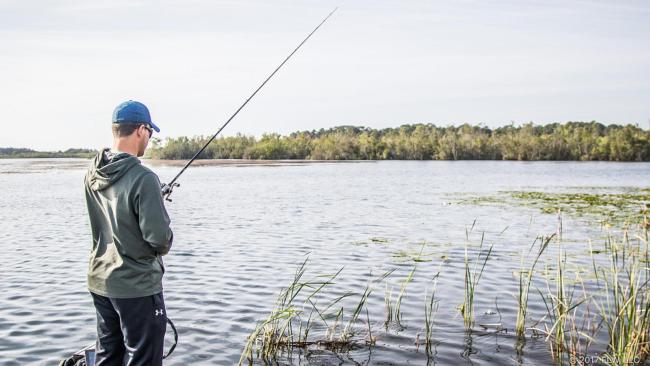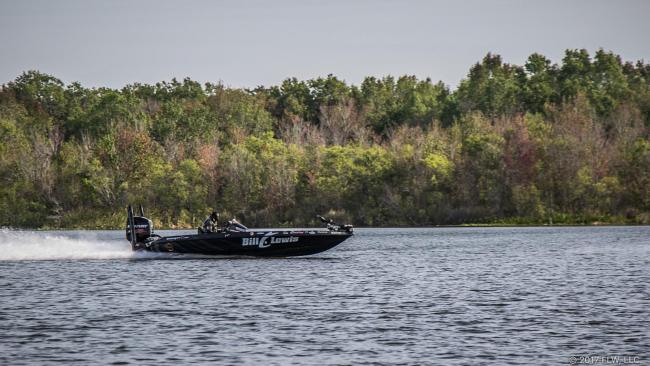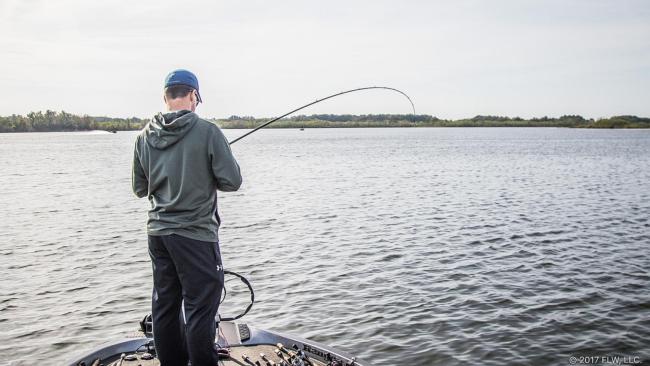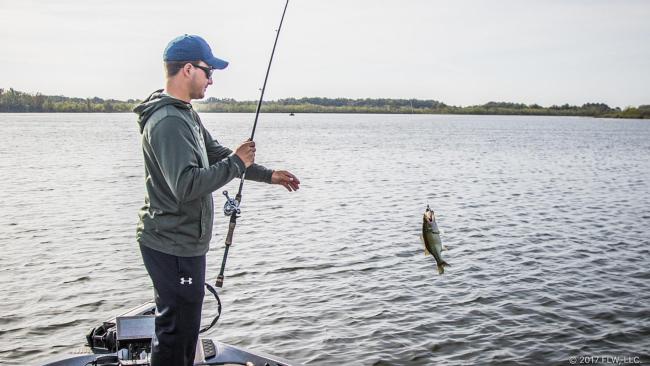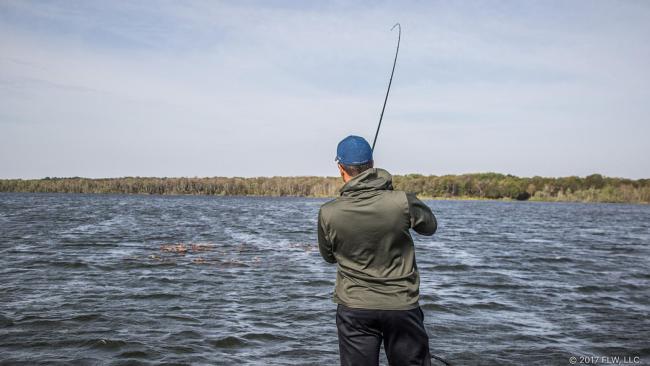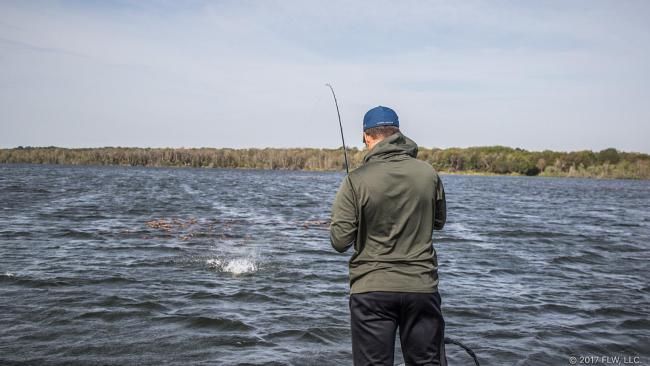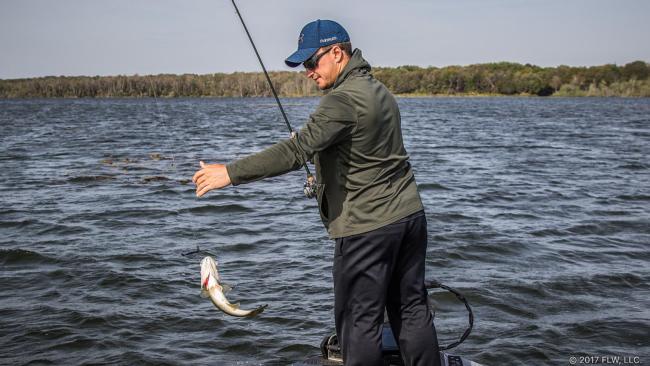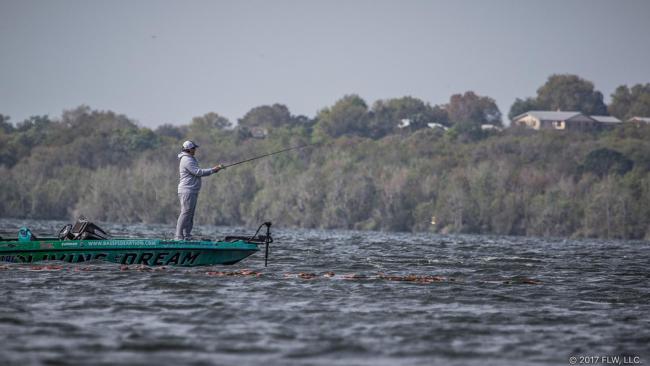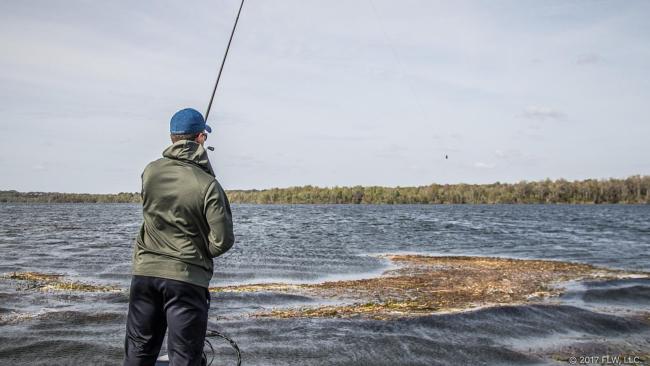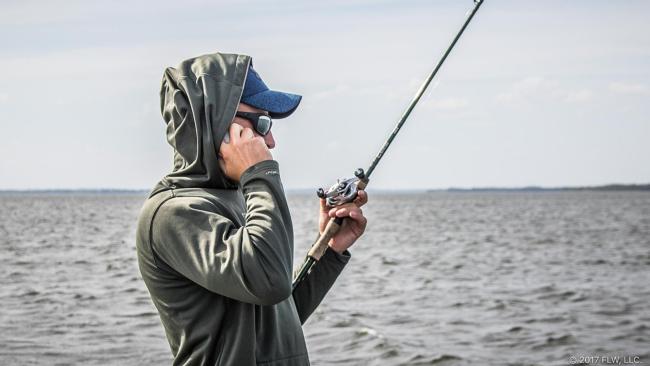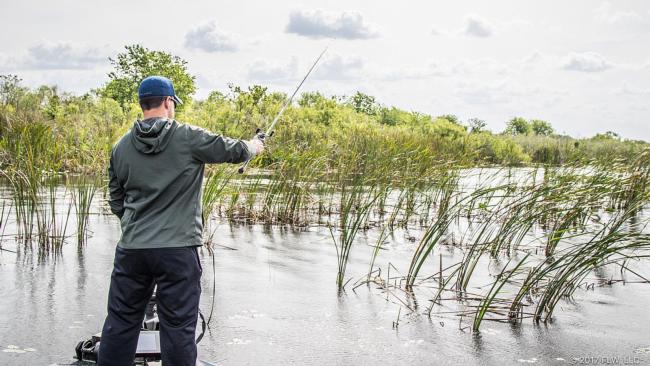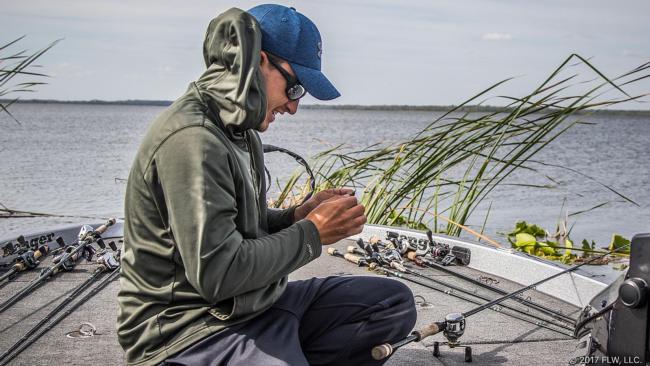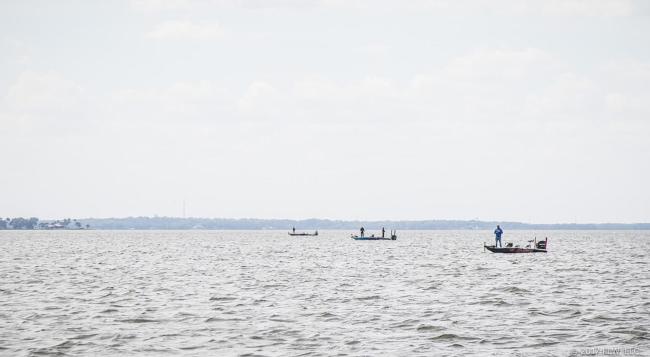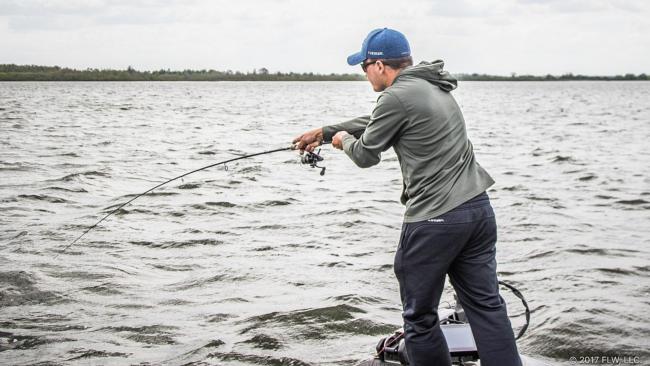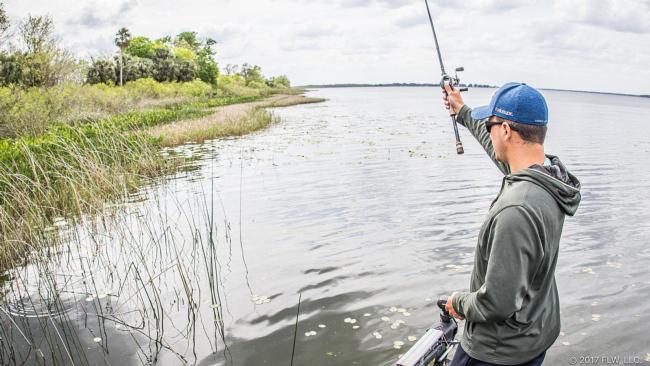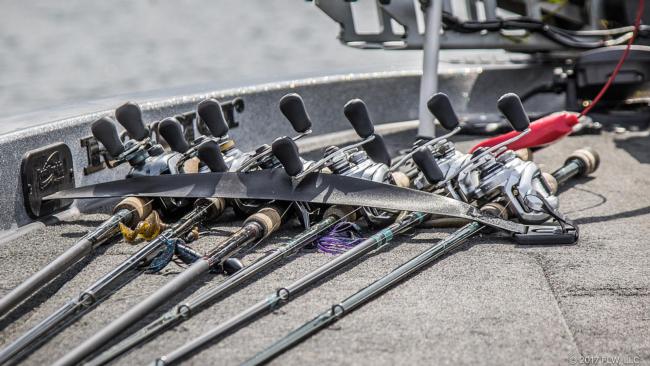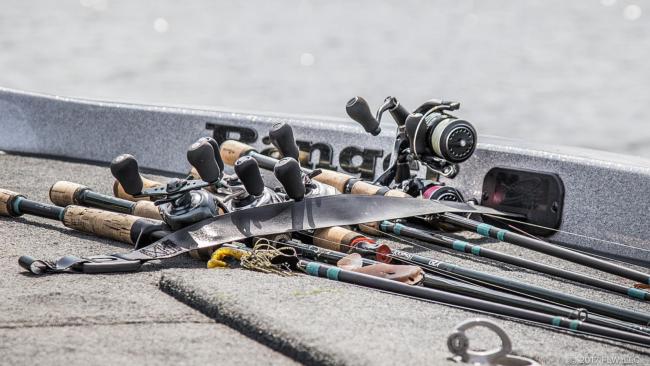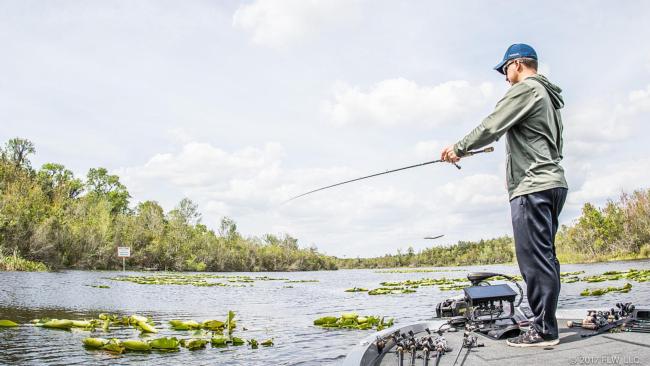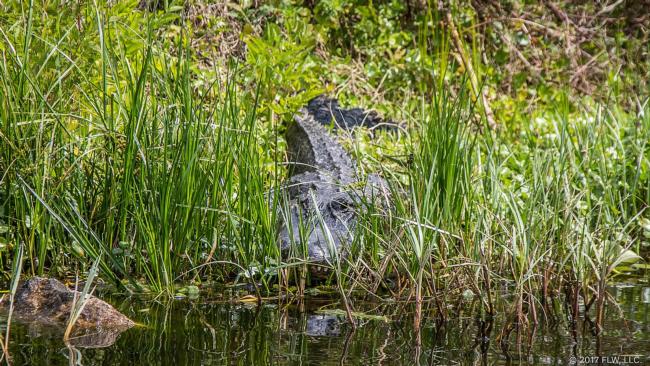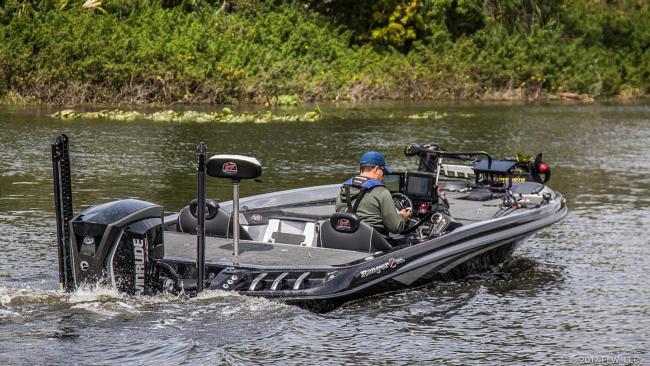Harris Chain Practice with Chris Johnston
How the reigning Rookie of the Year began preparation for Tour stop No. 3
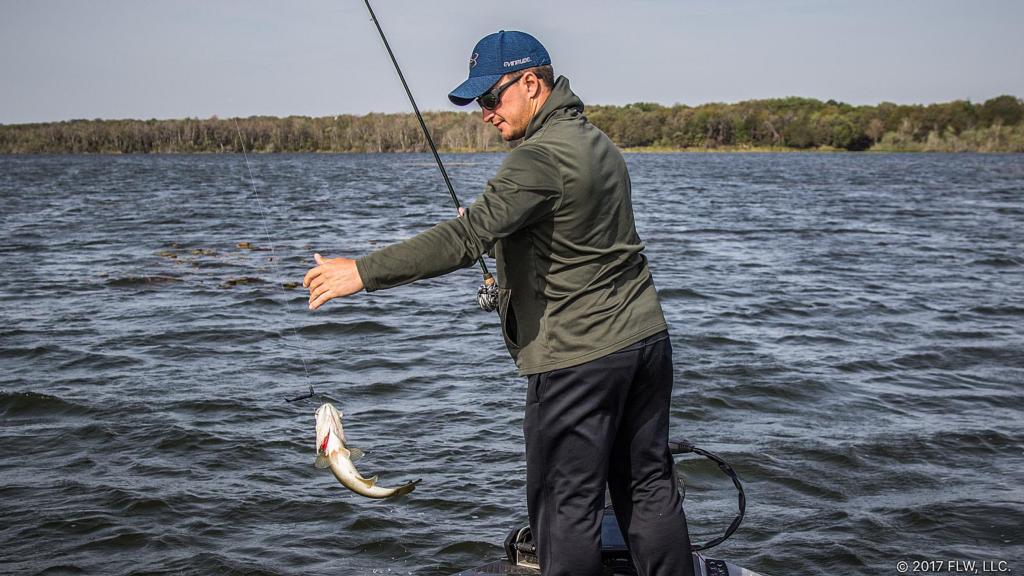
After a sparkling debut season on the FLW Tour when he finished second overall in points and grabbed Rookie of the Year honors, Chris Johnston is off to another hot start. This year, the younger half of the Johnston duo is catching them again and is in 23rd place in the Angler of the Year race. Headed into the third event of the season at the Harris Chain in Florida, Johnston was kind enough to let me hop in the boat with him on the first morning of practice to get a look at how the Canadian phenom goes about breaking down a lake.
The Harris Chain event, which is presented by Ranger Boats, takes off from Lake Harris in Leesburg, Fla., but that lake is only a small part of the playing field. In all, the pros have the run of 10 connected lakes this week. Johnston is beginning his practice at Lake Griffin, which has the second longest travel time from takeoff of all the lakes in the chain. Idling out in the near dark, it’s a little chilly for Florida, but still a blessedly warm beginning after the cold that anglers experienced at the first two events of the 2017 season.
Johnston runs out of the canal where the Griffin boat ramp is located and begins his day on the leading shoreline of a bay that’s rimmed with Kissimmee grass, which is broken up by the occasional dock.
“I stopped for a half day on my way to Okeechobee [for the Costa FLW Series event],” says Johnston, who has only been on one of the 10 lakes in play before. “I saw some beds in the canals, but I never went to this lake.”
Speaking of beds, Johnston is an expert sight-fisherman and certainly hopes to sample a few before the week is out.
“I think that’s going to be key on day one,” he says. “But I bet a lot of guys will bomb on that, too. So I want to find something else.”
Johnston is mostly fishing a Zoom Ultravibe Speed Worm as he trolls down the edge of the Kissimmee grass. He veers off a little into more open water with some scattered pads and catches his first fish. It’s not big, but it’s always nice to get the first fish in the boat.
After a few more casts, he pulls the trolling motor and decides to run up into the river at the north end of Griffin.
After a few minutes running, Johnston sets the boat down a couple hundred yards away from a local and begins working north along the shore, flipping a Yamamoto Senko at pads, little cuts on the bank and sparse patches of some kind of fluffy looking grass. Though he occasionally mixes in some casts with the Speed Worm, it’s pretty slow going as he catches a few fish – mostly from the pads – but doesn’t really uncover anything too substantial.
Johnston’s tackle selection is interesting for Florida. Every reel is spooled with fluorocarbon. There’s no braid.
“I heard they’re really line-sensitive here,” says Johnston. “Trust me, I’m the first guy to want to throw 65 [pound-test braid]. I hate flipping with fluoro.”
With three bites to his credit along the shoreline, Johnston hits a dead spell, cranks the motor and makes the short run to the other bank.
Here, the cover is more spread out, with cattails reaching out off some small islands and larger patches of pads. Unfortunately, it’s less productive, and Johnston fishes quite a ways without a bite.
Getting out more into the river and off the bank, Johnston rededicates himself to his Speed Worm. He’s throwing it with a 1/16-ounce weight and winding it back at a medium speed, not really popping or twitching it on the retrieve at all.
Just as Brian Latimer runs past, out toward the lake, Johnston hooks up, bringing another fish up out of the grass and into the boat. Unfortunately, like the others he’s caught so far today, it isn’t all that big. After a few more casts, he pulls up.
“All right, let’s find some hydrilla,” says Johnston. “Maybe get something bigger than a 2-pounder.”
Johnston runs out to the main lake until he sees the grass change on his graph. It turns out he’s stopped on a mix of grass that includes eelgrass, with the occasional clump of hydrilla thrown in for good measure. Slinging the Speed Worm into a patch of dollar pads, he quickly draws up another fish.
“Well, we’re on about the 7-pound pattern now,” he jokes.
As he continues on through the offshore grass, Johnston is joined nearby by Joseph Webster and Ramie Colson Jr. He encounters a few big mats of eelgrass that look like they’re uprooted from the bottom, and it takes a high drop to get a bait into them. Unfortunately, they don’t produce any bites. Moving on from the mats, Johnston picks up his phone when Josh Weaver calls with a breakdown of the action on Lake Harris. From the sounds of it, Weaver has had a more productive start to his day, but he’s also experienced some frustration.
“He says there are so many boats over there it’s stupid,” says Johnston when he hangs up. “Everything that looks good is just covered up.”
Moving again, Johnston heads back toward the back, this time on the lee shore. With the wind howling overhead through the short Florida swamp trees, Johnston patiently picks along with a Senko in a mix of pads and cattails. This particular section of Griffin offers some of the clearest water we’ve seen yet, and it could be perfect for sight-fishing if the bottom was sandy and hard instead of silted and covered with grass.
After mangling his bait on a pad stem, Johnston pauses to re-tie, makes a few more flips and then heads back offshore.
Johnston stops the boat a long way off the bank and begins fishing near the edge of a major grass flat that is mostly made up of eelgrass. It must be a good-looking spot. Scott Canterbury is a few hundred yards away, Clayton Batts is down the way a little, and Scott Martin and Brian Latimer round out the mix.
Putting down the light Speed Worm, the young pro opts instead for a swim jig, and then, surprisingly, a shaky head worm.
“At least I’ll be able to cast it and feel the bottom,” says Johnston of the worm.
Even so, it’s tough going. The wind is howling, and Johnston has stopped getting bites.
Another 15 minutes or so of fruitless casting and it’s time to go. Johnston runs back toward the ramp, skimming along the lee shore and keeping his eyes peeled.
“These are the first buggy whips I’ve seen,” he says as he stops at a likely looking bank. “Those other reeds back there that guy was fishing looked good too.”
Despite the looks, he doesn’t stay long. So far, Griffin isn’t bowling Johnston over, that’s for sure.
Though the number of high-end Shimano and G. Loomis combos on his deck has grown as the day goes on, Johnston isn’t totally loading the deck. There’s probably a lot to be said for the simplicity of Florida fishing, but even so, he’s obviously got confidence in what he’s using. From the looks of it, Johnston could fish the entire tournament with a handful of rods and probably catch plenty of bass.
After picking up, Johnston points his Ranger toward the Lake Griffin State Park, crashing through 2-footers on the way before settling in a calmer pocket. Quickly, he starts flipping some more isolated pads and lands a skinny 2-pounder.
“I would think if you did it enough you could get a good one or two,” he says of the pad-flipping program, “like a 3- or 4-pounder eventually, if you had like 50 of these pad beds marked.”
Penetrating farther back into the Dead River, Johnston keeps on probing the pads. The farther back he goes, the less productive he is. Eventually, it’s time to head back to the ramp to shake me off.
Along the way out, we spot a big ol’ alligator sunning for warmth. It’s hard to pass up the chance to get a photo of a big gator well out of the water.
At about 12:30, Johnston drops me back off at the ramp and heads out. He hasn’t pulled the plug on Griffin yet, but there are still two and a half days left to find something better than his parade of small fish from the morning.
